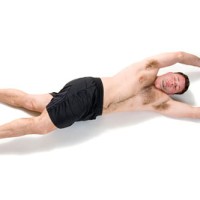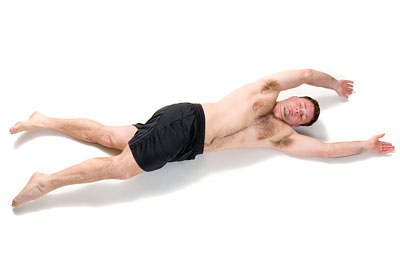
Let’s Get Rolling
Walking is rolling standing up – with a higher demand for stability. A lack of mobility is often the result of poor stability – soft-tissue restrictions and joint fixations are a compensatory stabilization strategy.
Rotational stability and power is needed in all sports and by all athletes. If you have a hip or shoulder problem you may want to assess your rotary stability with rolling. The thoracic spine is often stiff and needs more mobility in extension and for rotation. After mobilizing thoracic spine rotation, integrate some rolling into your warmups and daily routine.
Rotary stability is largely a function of the internal and external obliques, which are often inhibited. Rolling taps into developmental movement patterns in which babies learn to stabilize the torso for arm and leg movement. Adults spend little to no time on the round and can benefit from learning and practicing the two upper and two lower body rolling patterns.
“As babies, we have mobility first, then we learn to stabilize. Later, as we begin to move poorly for whatever reason, the brain sacrifices mobility to supply stability. To regain the missing mobility, we need to reestablish stability first. “ – Gray Cook
“Tonic holding is what the sedentary culture does when it’s not prepared for activity. Rather than jumping into the gym without preparation, we need to start with core stability and motor control before moving to extremity training. For instance, the core needs to be firing properly before we hit the bench press. When we bench without good core motor control, we’re building exterior musculature the interior can’t support.” – Secrets of Primitive Patterns
Before You Get Rolling
The first consideration for rolling is neck mobility. If an athlete has neck pain during active range of motion or is really restricted in their cervical spine they should first see a rehab specialist that can create some mobility. The neck drives movement and is critical for initializing the two upper body rolls.
Take this simple test and see if you have adequate neck range of motion…
Touch your chin to your chest
Look up at note if your forehead is horizontal with the ceiling
Look left, then right – noting if your chin is parallel with your clavicle
If you don’t have pain and are close to full range of motion in each direction you are good to go. Secondly assess your shoulder flexion. Make sure that your shoulders are free of pain or pinching (impingement) while lying on your back with the arms overhead. Restricted thoracic rotation will also affect your ability to roll.
– Kevin Kula, “The Flexibility Coach” – Creator of FlexibilityRx™ – www.FlexibilityRx.com
Related Resources
Perry Nickelston: Core Rolling Patterns: The Soft Roll (link)
Secrets of Primitive Patterns (link)
Dynamic Chiropractic: Primal Rolling Patterns for Core Sequencing (link)
Functional Movement Systems: Rolling Upper Body (link)
Using Rolling to Develop Neuromuscular Control (link)
Tags: developmental perspective, DNS, FMS, Functional Movement Screen, Prague School of Rehab, rolling patterns, rotary stability, Stop Chasing Pain

Leave A Reply (No comments so far)
You must be logged in to post a comment.
No comments yet